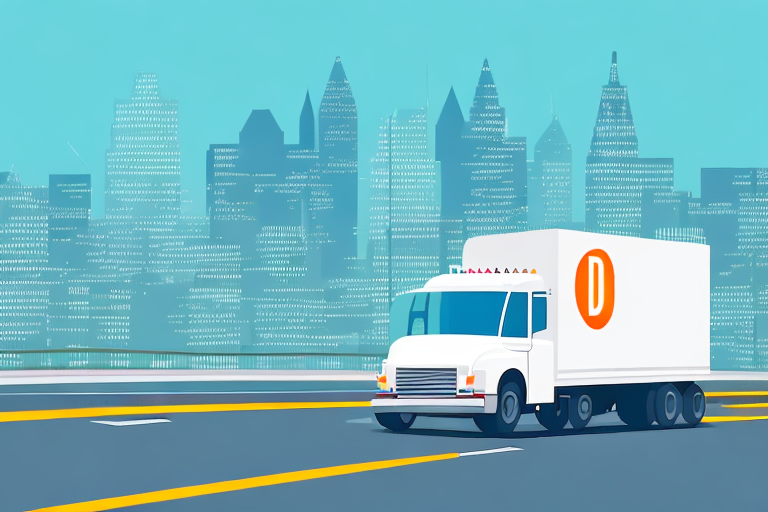How to Secure Delivery Contracts with Companies: An SEO-Optimized Guide
Securing delivery contracts with companies can significantly boost your delivery service business. Whether you're an established provider or just starting, these contracts offer a stable revenue stream, enhance your brand presence, and attract new clients through referrals. This comprehensive guide walks you through the essential steps to obtain and maintain lucrative delivery contracts with businesses.
1. Understanding the Importance of Delivery Contracts
Delivery contracts with companies provide a reliable and consistent revenue source, essential for business growth and expansion. According to a Statista report, the U.S. delivery industry revenue is projected to reach $400 billion by 2025, underscoring the lucrative potential of securing corporate contracts.
Moreover, business deliveries tend to be more profitable than individual consumer deliveries due to larger volumes and higher payment willingness for timely and efficient services. Establishing long-term relationships through contracts fosters trust and loyalty, leading to repeat business and valuable referrals.
Additionally, delivery contracts enable streamlined operations by setting structured schedules and routes, optimizing resources, and reducing costs. This efficiency not only improves profitability but also enhances customer satisfaction and service quality.
2. Researching Potential Companies to Partner With
The initial step in securing delivery contracts involves identifying potential business partners. Begin by researching companies within your local area or industry that may require delivery services. Consider factors such as the nature of their products, company size, existing delivery infrastructure, and any gaps in their current delivery processes.
Evaluate the reputation of these companies by reviewing their industry standing and customer feedback. Platforms like Glassdoor and Better Business Bureau provide insights into a company's reliability and partnership history.
Assess the financial stability of potential partners by reviewing their financial statements or consulting industry reports from sources such as SEC's EDGAR database. A financially stable company is more likely to honor payment terms and sustain long-term contracts.
3. Building a Compelling Business Case for Your Services
Once you've identified potential partners, develop a strong business case that highlights your unique strengths and value propositions. Emphasize aspects like delivery speed, reliability, cost-effectiveness, and your ability to handle high-volume shipments. Back your claims with data, such as average delivery times and customer satisfaction rates.
Understand the specific needs of the companies you're targeting by researching their industry, competitors, and customer base. For instance, if targeting healthcare companies, stress your capacity to manage sensitive and time-critical deliveries while complying with regulatory standards.
Demonstrate flexibility by being open to negotiating terms such as pricing, delivery schedules, and service scope to align with the client's requirements. This adaptability not only makes your proposal more attractive but also lays the foundation for a mutually beneficial partnership.
4. Crafting a Standout Pitch
A compelling pitch differentiates you from competitors and captures the attention of potential clients. Create a visually appealing presentation or video showcasing your delivery fleet, team expertise, and operational processes. Incorporate client testimonials and case studies that highlight successful partnerships and the positive impact of your services.
Tailor your pitch to address the specific needs and pain points of the prospective company. Demonstrating a deep understanding of their business challenges and offering customized solutions can significantly increase your chances of securing the contract.
Offer flexible delivery options, such as same-day or weekend deliveries, to cater to varying business needs. Highlighting these options can set you apart from competitors with more rigid service offerings.
5. Navigating the Contract Negotiation Process
Negotiating contracts requires a clear understanding of both your costs and the client's expectations. Prepare by outlining your pricing structure, delivery schedules, and service terms. Be ready to discuss and justify your rates based on the value and reliability you offer.
Engage in open and transparent discussions to address any concerns or requirements the client may have. This collaborative approach fosters trust and facilitates the creation of a contract that benefits both parties.
Consider consulting with legal counsel to review contract terms and ensure compliance with relevant laws and regulations. Proper legal guidance can help mitigate risks and protect your business interests.
6. Maintaining Strong Client Relationships
Securing a contract is just the beginning; maintaining a healthy relationship with your client is crucial for long-term success. Ensure regular communication to address any issues promptly and keep the client informed about delivery statuses.
Deliver consistently on your promises by adhering to agreed-upon schedules and maintaining high service standards. Promptly address any concerns or complaints to demonstrate your commitment to client satisfaction.
Seek feedback regularly to identify areas for improvement and implement changes that enhance your service quality. Building a reputation for reliability and responsiveness encourages repeat business and referrals.
6.1. Streamlining Delivery Processes for Efficiency
Optimize your delivery operations by investing in technology that automates and enhances route planning, delivery tracking, and resource management. Tools like Route4Me and DispatchTrack can help streamline your processes, reduce costs, and improve delivery times.
Conduct regular training sessions for your drivers to ensure they are skilled in efficient delivery practices and customer service. Continuous process improvement leads to higher efficiency and better service quality.
6.2. Measuring Success and Implementing Improvements
Monitor key performance indicators (KPIs) such as delivery time accuracy, customer satisfaction scores, and operational costs to assess the effectiveness of your services. Utilize data analytics tools like Tableau or Power BI to gain insights and identify areas for improvement.
Implement continuous improvement strategies based on your KPI analysis. This could involve adopting new technologies, refining delivery routes, or enhancing customer service protocols to stay competitive and meet evolving client needs.
7. Leveraging Technology and Staying Ahead of Industry Trends
Adopting the latest technologies can significantly enhance your delivery services. Implement route optimization software, real-time tracking systems, and automated inventory management to improve efficiency and accuracy. Technologies like Geotab for GPS tracking and Scandit for barcode scanning can elevate your service quality.
Stay informed about industry trends and innovations by participating in industry conferences, subscribing to relevant publications, and joining professional networks. Embracing advancements such as autonomous vehicles, drone deliveries, and sustainable practices can keep your business competitive and attractive to potential clients.
Invest in sustainable delivery practices, such as using electric vehicles or optimizing delivery routes to reduce carbon emissions. Aligning with environmentally friendly initiatives can enhance your brand reputation and appeal to clients prioritizing sustainability.
8. Ensuring Legal Compliance and Mitigating Risks
Compliance with legal regulations is essential to protect your business and maintain trust with clients. Ensure that all your delivery operations adhere to local, state, and federal laws, including licensing, insurance, and safety standards.
Engage legal counsel to review contracts and agreements to identify and mitigate potential risks. Proper legal oversight helps prevent disputes and ensures that contractual obligations are clear and enforceable.
Maintain comprehensive insurance coverage to protect against liabilities such as property damage, product loss, and delivery delays. Adequate insurance safeguards your business assets and provides peace of mind to your clients.
9. Scaling Your Business Through Repeat Contracts and Referrals
Building a reputation for reliability and quality service opens opportunities for repeat contracts and referrals. Encourage satisfied clients to refer your services to other businesses by offering incentives or referral programs.
Expand your service offerings based on client needs and market demand. Diversifying your services can attract a broader range of clients and increase your revenue streams.
Leverage your network by attending industry events, joining business associations, and engaging in community activities. A strong professional network can lead to new business opportunities and partnerships.
Focus on sustainable growth by continuously enhancing your service quality, investing in technology, and adapting to market changes. Strategic scaling ensures long-term success and resilience in a competitive industry.
Conclusion
Obtaining and maintaining delivery contracts with companies requires a strategic approach encompassing thorough research, compelling business proposals, effective negotiations, and continuous service improvement. By understanding the importance of these contracts, leveraging technology, and building strong client relationships, you can position your delivery service for sustained growth and success in the competitive marketplace.





















